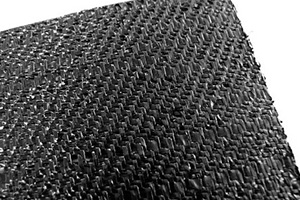Geotextiles

Geotextiles and related products have many applications and currently support many civil engineering applications including roads, airfields, railroads, embankments, retaining structures, reservoirs, canals, dams, bank protection, coastal engineering and construction site silt fences or geotube. Usually geotextiles are placed at the tension surface to strengthen the soil. Geotextiles are also used for sand dune armoring to protect upland coastal property from storm surge, wave action and flooding. A large sand-filled container (SFC) within the dune system prevents storm erosion from proceeding beyond the SFC. Using a sloped unit rather than a single tube eliminates damaging scour.
Erosion control manuals comment on the effectiveness of sloped, stepped shapes in mitigating shoreline erosion damage from storms. Geotextile sand-filled units provide a "soft" armoring solution for upland property protection. Geotextiles are used as matting to stabilize flow in stream channels and swales.
Geotextiles can improve soil strength at a lower cost than conventional soil nailing. In addition, geotextiles allow planting on steep slopes, further securing the slope.
In building demolition, geotextile fabrics in combination with steel wire fencing can contain explosive debris.
Coir (coconut fiber) geotextiles are popular for erosion control, slope stabilization and bioengineering, due to the fabric's substantial mechanical strength.:App. I.E Coir geotextiles last approximately 3 to 5 years depending on the fabric weight. The product degrades into humus, enriching the soil.
Type of geotextiles:
Woven geotextiles
Unwoven geotextiles